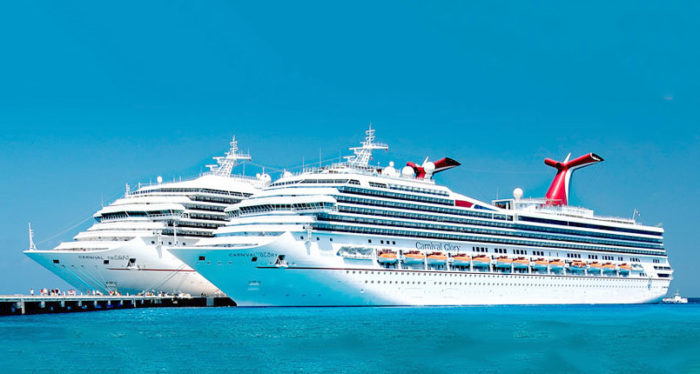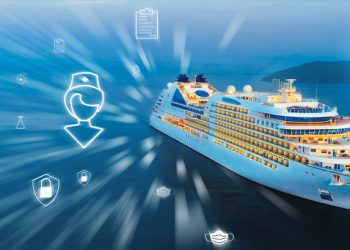In the latest USCG’s Newsletter for the cruise sector, Coast Guard provides updates regarding Certificate of Compliance Exams; what to take into consideration following dry dockings, what is required to be completed upon the vessel’s arrival to the U.S and what to check while preparing for any type of COC exam.
USCG Certificate of Compliance (COC) Exams That Follow Dry Dockings
This is a reminder that USCG Port State Control Officers (PSCOs) should be vigilant when completing a COC exam on a cruise ship that recently completed its dry dock or dockside maintenance period. A tremendous amount of work is done in a short time span. Several areas of the ship are affected with most departments out of service to ensure the work is completed. It is an expensive endeavor that doesn’t allow the ship a lot of time to prepare for COC exams scheduled immediately after docking periods.
Some non-conformities observed by USCG PSCOs during COC exams scheduled after docking periods include CO2 systems not connected, fire doors in several main vertical zones not closing or not opening, section valves not working in accommodation areas, liferafts not properly installed, and life boats which cannot be properly deployed or that are missing equipment. In one case during an Initial COC exam, a PSCO observed that all fuel oil shut-off valves were blocked open.
Although the COC exam by nature is challenging, the CSNCOE emphasizes the exam should be done in a holistic manner, ensuring that systems and arrangements are examined thoroughly.
Initial Certificate of Compliance (ICOC) Exams – Closing the Loop!
You have returned from a successful ICOC exam at one of the European shipyards for the newest cruise vessel that will make your port the first U.S port. What is required to be completed upon the vessel’s arrival to the U.S.? The answer to this will depend on how much time has passed between the start of the ICOC exam and when the vessel finally arrives to its first U.S. port.
- If it has been less than 12 months since the ICOC was started, and as long as there have been no changes to the vessel, all that is required is the completion of any outstanding worklist items and for you to run a crew drill. You should do a walkthrough of the vessel to ensure there are no noticeable issues (i.e. storage in unauthorized spaces) that could pose a safety concern. Testing of systems should not be performed unless there are clear grounds that warrant it.
- If it has been more than 12 months but less than 24 months since the ICOC exam started, the exam should be conducted as if it were an annual exam.
- If it has been more than 24 months since the start of the ICOC exam, the vessel will be required to complete a new ICOC exam. The vessel should submit plans to the Marine Safety Center for any changes that may have been completed since the Coast Guard was last on board. If there have been no changes, the vessel should submit a letter or e-mail from their Classification Society, or flag state representative, that attests that there have been no changes made since the last Coast Guard review. Exam items, such as the smoke extraction test and the transitional power test, need not be re-examined as long as there was adequate Coast Guard representation during the original examination and testing of these items.
Remember that this is an exam for issuance of the Certificate of Compliance. Anything that cannot be completed from the original work list, or any new items, must be notated on a Form B and issued to the vessel. At no time should you leave the vessel with a worklist.
Checking for Outstanding Plan Review Items Documented by the Marine Safety Center (MSC)
While preparing for any type of COC exam, PSCOs should check for any MSC outstanding plan review items, especially as they pertain to alternative designs per SOLAS II-2/17 or SOLAS III/38 for novel lifesaving systems issues, including oversized life boats.
To do this, PSCOs can check for plan review documents that were uploaded in MISLE, and then review them to identify areas that should be checked during the exam. PSCOs can also communicate with the ship to see if they are aware of any outstanding items. The CSNCOE can assist units in determining if the MSC plan review was completed.
After the exam, the PSCO should also e-mail the MSC regarding the status of the plan review items that required OCMI verification. Keep in mind that a deficiency can, and should, be issued for outstanding plan review items if the deficiency can be supported by a direct cite in SOLAS. The cruise ship industry is also reminded that it is important to respond in a timely manner to official correspondence from the U.S. Coast Guard. This can prevent any confusion during the scheduled exams between the U.S. Coast Guard PSCOs and the crew, and in certain situations could prevent the withholding of the COC due to incomplete plan review.
The Coast Guard’s Cruise Ship National Center of Expertise (CSNCOE) published its fall edition. The newsletter serves to provide useful information on the national and international policies as well as highlight success stories, best practices and achievements in the field. This edition of the newsletter provides information to Coast Guard units and maritime stakeholders on and covers a variety of topics to include: Coast Guard Certificate of Compliance Exams Following Dry Dockings; Initial Certificate of Compliance Exams – Closing the Loop; Outstanding Plan Review Items; Upcoming Regulatory Enforcement; FPVE Historical Data
Find out more by reading the Newsletter here
Source: USCG News




























































